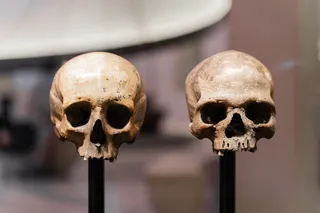Neanderthals stopped roaming Earth around 40,000 years ago. Yet as time passes, new technologies are helping scientists learn more about Homo neanderthalensis, how they might have lived, and what similarities they may have shared with Homo sapiens. There’s even a debate about what Neanderthals sounded like.
Scientists have long debated whether Neanderthals were capable of speech. Some argue that Neanderthals lacked the anatomical ability to even produce sounds.
In the 1980s, scientists discovered the skeleton of a Neanderthal male in Kebara Cave, Israel. Known as Kebara 2, the skeleton was well intact and allowed scientists to examine the neck bones. In particular, they found that the hyoid bone was similar to humans, which prompted researchers to think that Neanderthals were capable of speech.
But what did the Neanderthal sound like? And what did language mean to them?
Read More: Did Neanderthals Speak? Breakthrough Study Suggests Our Ancient Cousins Could Talk
...















